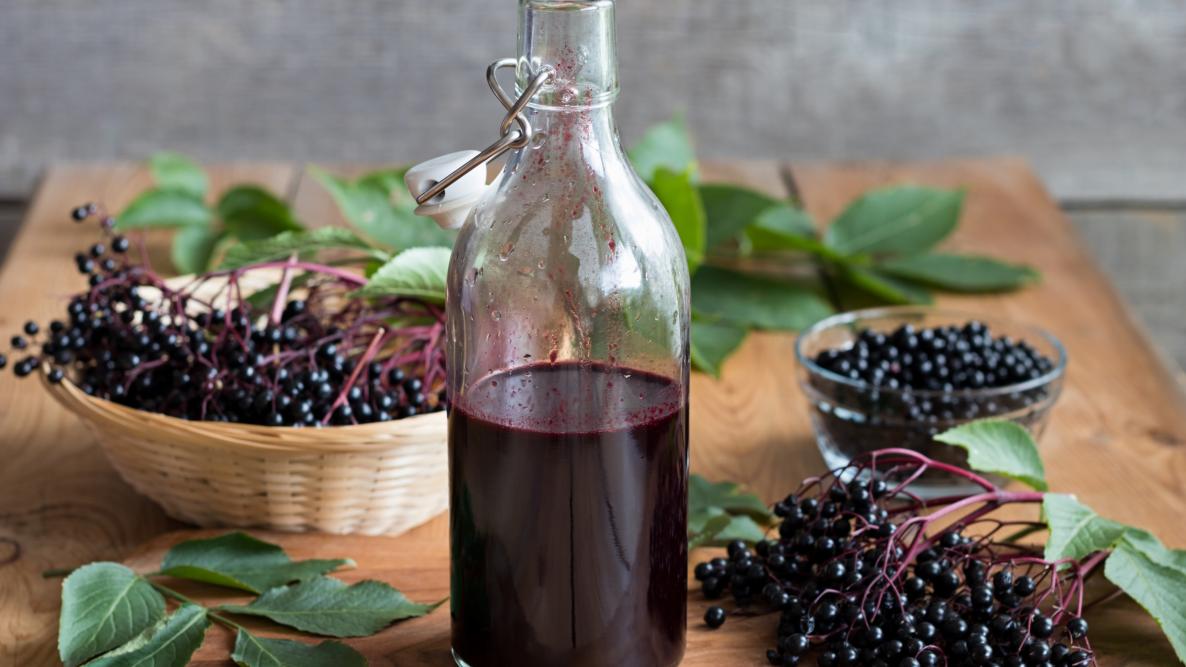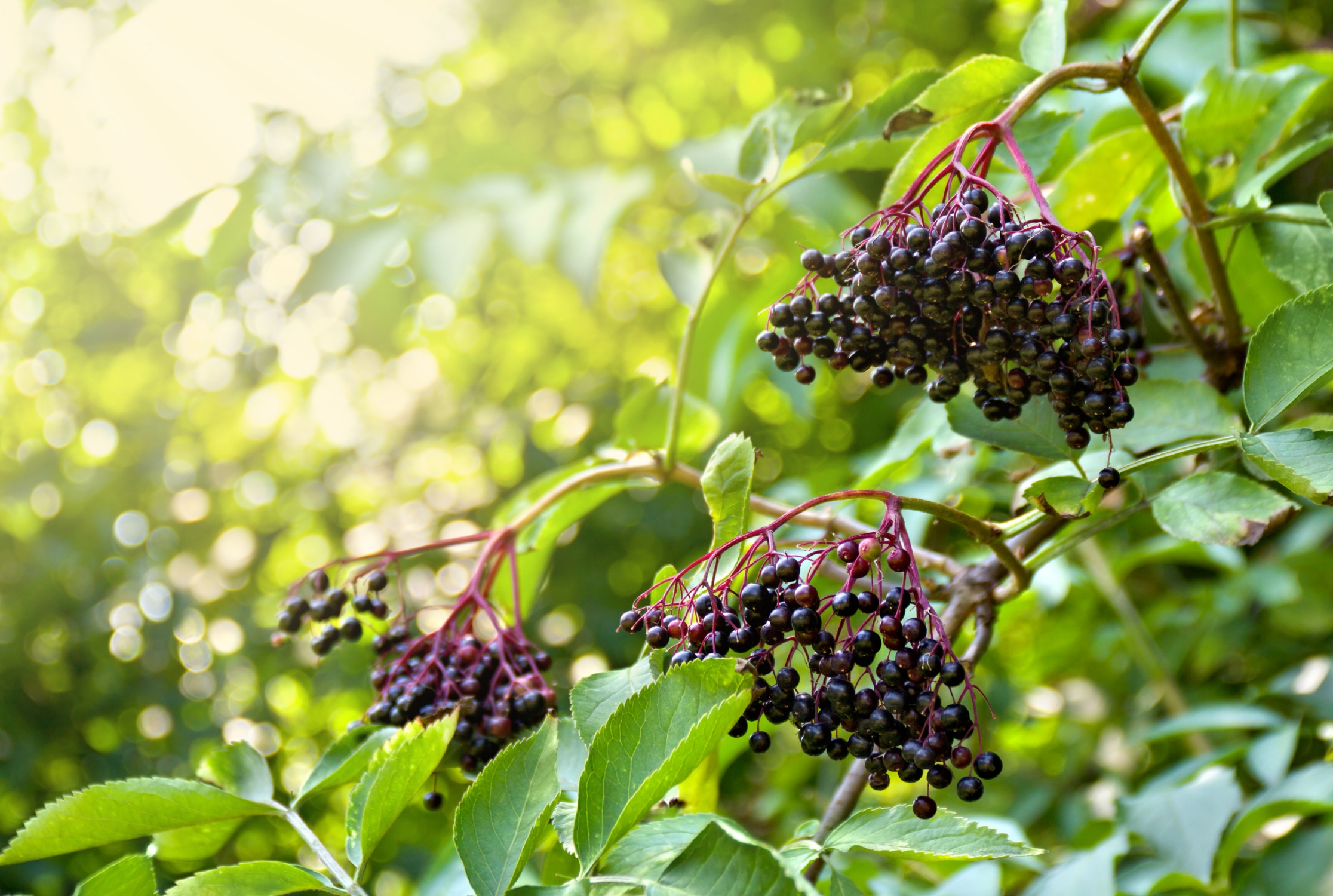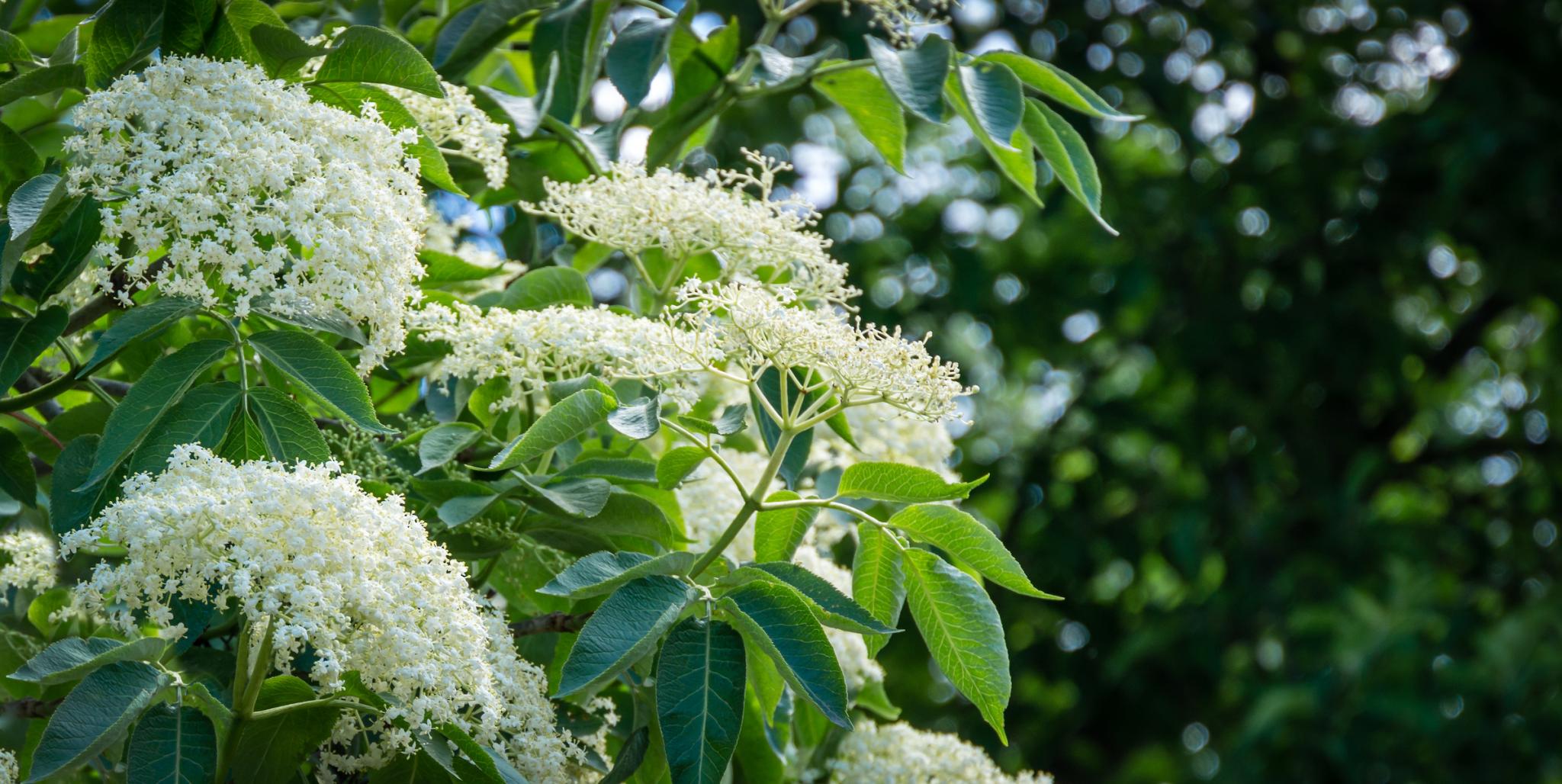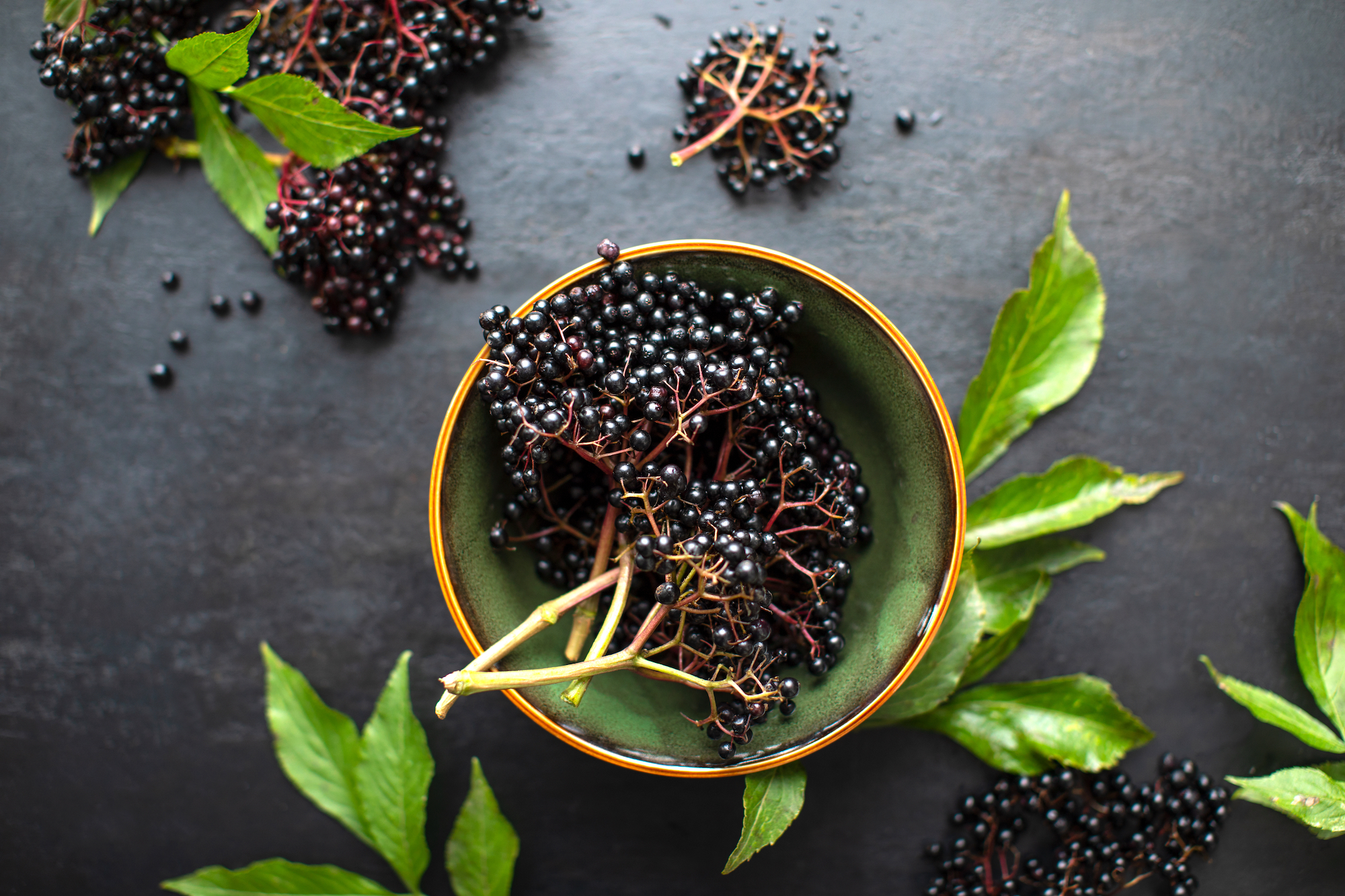
Sign up for our daily newsletter to get gardening tips and advice.
Planting, Growing, and Harvesting Elderberries
What do elderberries taste like?
Elderberries have a bright flavor that some people describe as a tangy and earthy version of blackberries or blueberries. Their naturally tart taste makes elderberries a popular base for teas, wines, syrups, and jams.
How are elderberries good for you?
These deeply-hued berries have a long, storied history as a medicinal “superfruit.” Studies have found that elderberry extract is a natural way to fight colds and flu and is more effective than commercial medicines.
Many folks take elderberry syrup to boost their immune system early in the cold and flu season. Learn how to make elderberry syrup.

ADVERTISEMENT
Elderberry flowers have a beautiful fragrance, too. I love their scent. But watch for bees before putting your face too close!












